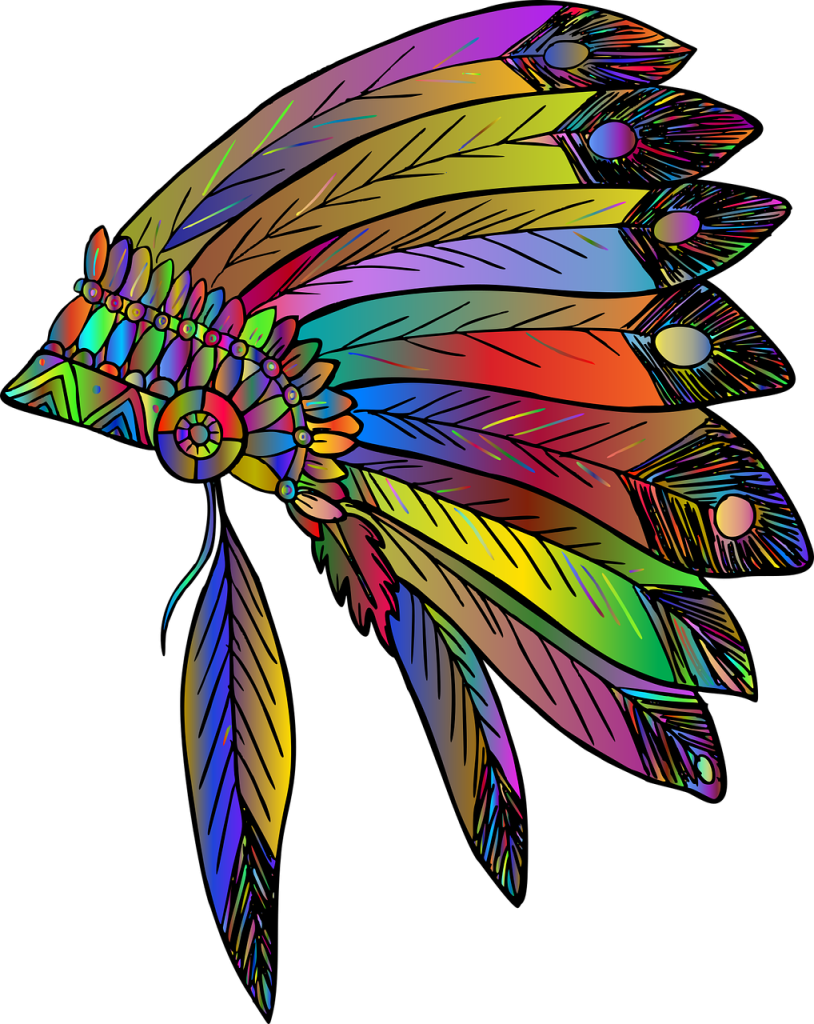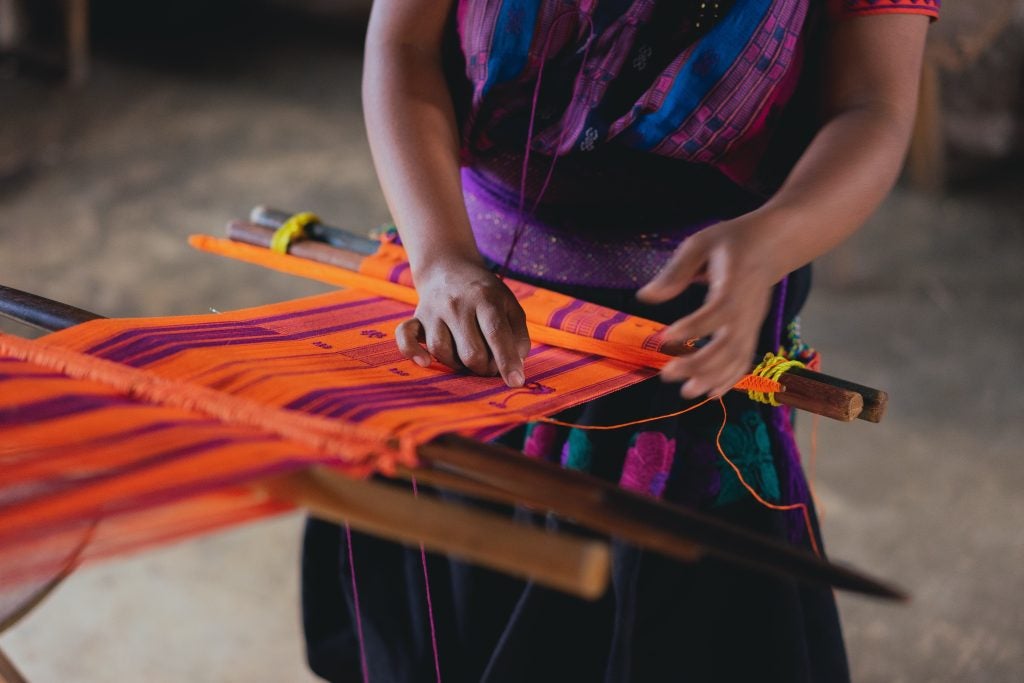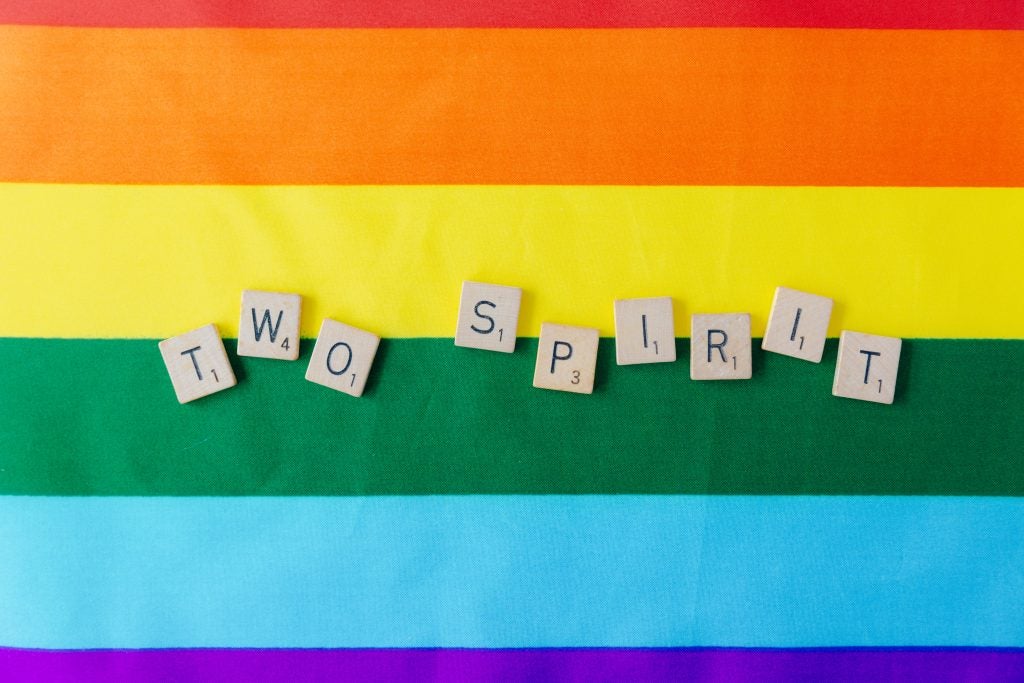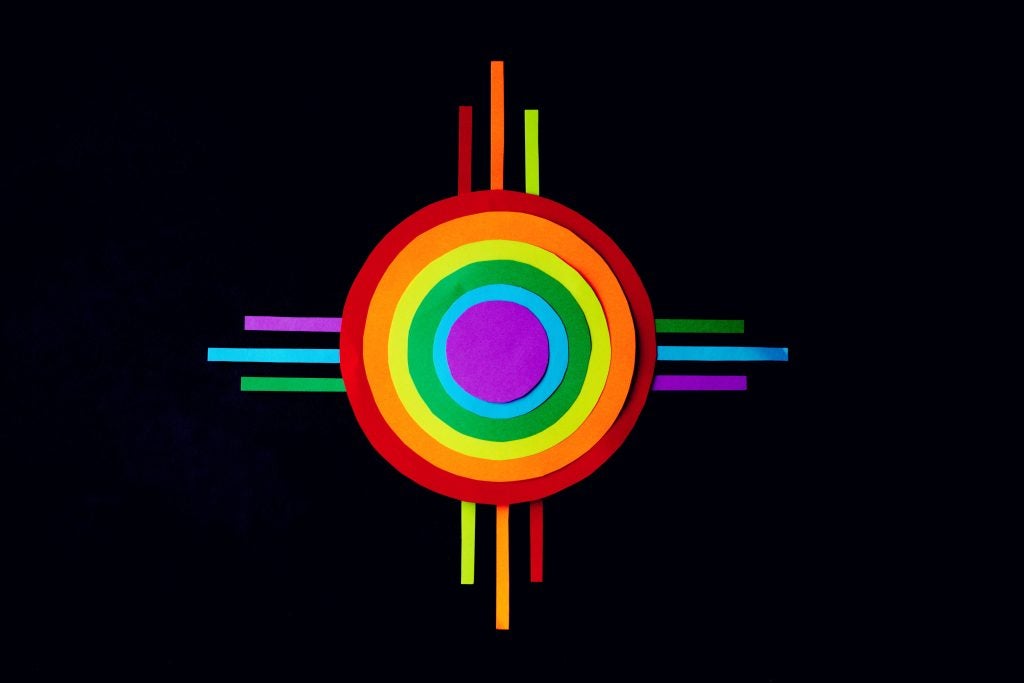Table of Contents
Introduction
Western cultures typically ascribe to the gender binary, or the gender system that is characterized by the existence of two genders based on sex: male and female. This is assumed to be ‘natural’ as it is based on an anatomical or biological basis, which is believed to be more ‘objective.’ However, numerous Native American societies officially recognize three, four, and sometimes even more genders. These gender systems are not as rigid as those of Western cultures, and they are known to be more fluid and variable.

The term “two-spirit” comes from the belief that everything comes from the spirit world, “androgynous or transgender persons are seen as doubly blessed [in the indigenous community], having both the spirit of a man and the spirit of a woman. Thus, they are honored for having two spirits and are seen as more spiritually gifted than the typical masculine man or feminine female.”1 There is a broad range for defining what being two-spirited means in Native American culture. To some Native Americans, being two-spirit is embodying both male and female spirits simultaneously and the harmony between these two identities. Others see the term “two-spirit” as a reminder of the true roots of indigenous culture, and that before European colonization, multiple genders were recognized. Two-spirits are usually identified in childhood based on a preference for activities of the ‘opposite’ sex, however, some heterosexually married men and women became two-spirits based on dreams or visions.2
The Spirituality and Divinity of Two-Spirited Individuals
Many two-spirits are incredibly gifted, and this is representative of their divine status and reverence they receive among their tribes. Certain ceremonial practices were specifically designated to be performed by two-spirits; for the Cheyenne, they led their tribes victory dances; the Crow and Hidatsa two-spirits chose the trees to be used for the construction of Sun Dance lodges; and a Mohave two-spirit was known to be so spiritually powerful that she could cure venereal disease. It was common for dreams and visions of female deities, or the moon confirmed male two-spirit identities.2 One tribe, the Zuni people, believed that those who discovered themselves as third gender were the smartest and toughest in the clan.5 According to most tribes, third genders were formed by a supernatural power, and learned of their third gender through visions or dreams.4 Those who possessed “two spirits” were revered, as most tribes held the belief that the third gender had a strong relationship with “the Creator” because they were able to link the gap between men and women.5 The trait that two-spirits were best known for were their skill in crafts that were usually created by women. It was known to be the highest compliment to receive when a woman’s household possessions were compared to the high quality of a two-spirited individual’s crafts. Since the roles between men and women were so distinct in these Native American tribes, it was prized to be a person of the third gender, as they could complete both duties for males and females.
Another main idea crucial to understanding the third gender is that they did not adhere to the binary standards of either being fully male or fully female. These highly respected individuals experienced the gender spectrum fluidly and they were never condemned for who they were among their tribe.
Before colonization mangled their culture, numerous Native American tribes accepted a third gender. The third gender (also known as “two spirits” or “two-spirited”) were biological males that were culturally identified as belonging to a gender that is separate from male and female. ² The population of a fourth gender, biological females that didn’t identify with the gender they were born as, was much smaller. According to Trista Wilson, there were about 155 Native American tribes that culturally accepted the third and fourth gender. ² Compared to many other Western societies, Native American tribes had tolerant ways of understanding sexuality and how important gender is for determining an individual’s identity.³ The third gender could be considered parallel to being transgender, but it is significant to note that people of the third gender did not take any measures to physically become a member of the opposite sex. Native American cultures believed that two-spirits had their own separate gender, and unlike modern Western society, there existed no attached stigma. It should be emphasized that these people were not considered homosexuals, and that the concept of third gender was less about sexual orientation (although third genders did form sexual relationships with same and different sex individuals) and more about gender roles. For example, a third gender woman would take on more female traditional roles, and their craft was favorable compared to the other women.
The story of We’Wha
The history of multiple genders among the tribes of Zuni Native Americans has been recorded to be present since prehistoric times. Among a Zuni burial site, archaeologists discovered men buried with objects that were often associated with women, such as baskets, balls of clay, and even a woman buried wearing both traditionally male and female clothing. We’Wha was born male in 1849 to the Zuni tribe. As she grew older, her “two spirit” became clear through her feminine attributes, and from that point on she was raised by women and taught the various skills of both men and women. We’Wha was known as the most intelligent person in the pueblo, with an extensive knowledge of Zuni history and culture.2 We’Wha learned pottery-making from women in the tribe, excelled in weaving (a practice traditionally performed by men), and listed on a census from 1881 as a farmer, which was another role that was meant for men in the tribe. We’Wha grew up to become a famous spiritual leader, known for her talents in pottery, weaving, and activism and ambassadorship of the Zuni nation. The passage below demonstrates the influence We’Wha had in their tribe and even the world:

Two spirits often held honored and influential positions. We’wha was an accomplished potter and weaver, and a recognized expert in Zuni religion. That such an individual could become a representative for [her] tribe underscores the degree to which individual differences in gender and sexuality were accepted. In most tribes the ability to combine male and female skills was not viewed as a liability but a talent. It came as no surprise to the Zunis that We’wha would travel thousands of miles, overcoming the obstacles of language and culture, to live and mingle with the leaders of a powerful nation. [Two-Spirits] were expected to be extraordinary. ¹ We’Wha’s extraordinary weaving talent became so recognized that she was sent to Washington DC in 1886 to meet President Grover Cleveland and to present their Zuni weaving skills at the Smithsonian.
Eurocentric Ideals Imposed on Native Americans due to Colonization
When European colonizers first arrived to the Americas, their encounters with two-spirited people were strange. Europeans had no way of contextualizing what a two-spirited person was or what their existence meant. There was no counterpart to two-spirited individuals in European societies – social roles and belief systems in which gender is not limited to ‘man’ and ‘woman,’ and sexuality is not constrained to relationships between ‘opposite’ genders defined by anatomical sex.2 Europeans did not have the language to encompass the multidimensional identity of two-spirits, and their discriminatory Eurocentric ideals were applied to their understanding of two-spirited people, utilizing derogatory language to refer to them. The term “hermaphrodite” was often used by Europeans to describe native people they encountered who appeared to be crossing or mixing genders, this umbrella term was commonly used during this era to describe homosexuality, intersexuality, or androgyny.2 Others used the term “sodomite,” singling out what they viewed as the sexuality of the two-spirited males. Europeans ended up conflating gender and sexual orientation since there was a lack of openly queer diversity and acceptance within European and Euro-American societies. Two-spirits romantic relationships were often with non-two-spirit individuals of the same sex, while Euro-Americans viewed this as homosexual, this was accepted as the equivalent to the relationships between men and women. One Navajo elder explained that, “If they marry men, it is just like two men working together.”2
European colonization ended third gender practices and instilled homophobia and transphobia within Native American tribes. Those who were two-spirited went underground, and conservative European ideals about traditional gender roles conditioned Native Americans into believing non-heteronormative practices were sinful. Even generations later, these pervasive gender norms and heteronormative ideals were still present as homosexuals within the Native American community were subject to physical and verbal abuse up until the rise in LGBTQ activism of the 1990s.

When anthropologists first began observing the Native American culture, they coined the term berdache for the people of third gender. “Berdache” is pejorative, associated with the Arabic word meaning “male prostitute.” The term “berdache” ended up becoming the standard anthropological term for alternative gender roles among Native Americans, however, its original meaning was finally deemed offensive in the 1980s, as it was historically used to describe a younger, non-masculine male who engaged in homosexual relations.2 As a way of distancing themselves from the white European anthropologists that have historically dominated discourse around indigenous culture and studies, many queer Native Americans embraced “two-spirit” instead. This switch to “two-spirit” is incredibly significant as it massively shifted the bases of knowledge production by interrupting anthropological authority to define Indigenous truth.1 We need to allow marginalized groups, like Native Americans, to speak for themselves. Historically, white European anthropologists have written their history and teach it as their own knowledge. We need to acknowledge Indigenous peoples’ ‘intellectual sovereignty,’ which is Indigenous people’s right and power to invent and account for themselves rather than be spoken for and about.1
Gay American Indians (GAI) was the first organization to advocate for queer Native Americans. Randy Burns and the late Barbara Cameron established GAI in 1985. The book Zuni Man/Woman was published in 1991 and sparked the fight for the GAI. Rediscovering the historical prominence of We’Wha and the third gender influenced GAI to fight for their own rights and break barriers of prejudice within the Native American community. After this, the GAI held meetings where queer people could feel comfortable in sharing information to anthropologists about their scholastic knowledge of gender and sexuality. ¹ These meetings helped queer Native Americans further discover their roots and taught them to embrace their queerness with pride. It is also important to note that although two-spirit males have been recorded to have existed in at least 155 tribes, in about a third of these, a recognized status for females who adopted a masculine lifestyle existed as well.2 Native women’s roles and influence have largely historically been overlooked. Taking a broader view reveals that women throughout North America often engaged in male pursuits, from hunting and warfare to tribal leadership, without necessarily acquiring a different gender identity. Some of these women deserve recognition as leaders in the Native American resistance to European settlement.2

Concluding Remarks: What Two-Spirit’s History Means for Present and Future Generations
One of the most essential tenets of teaching queer theory is that you should strive to make the strange seem familiar and the familiar seem strange. This is in relation to rejecting the Eurocentric ideals that still persist today in society. It is necessary to unlearn the indoctrinated colonial ideals of One of the most essential tenets of teaching queer theory is to strive to make the strange seem familiar and the familiar seem strange. This is in relation to rejecting the Eurocentric ideals that persist today in society. It is necessary to unlearn the indoctrinated colonial ideals of the past. In this instance, that means questioning the validity of the gender binary and its Eurocentric origins. The radical existence of two-spirited people points to how ‘modern’ such ‘traditional’ Indigenous pre-Columbian notions of gender have been and continue to be over centuries.1 Learning about two-spirits’ divinity interrupts transphobic and homophobic Eurocentric ideals that have been ingrained in our minds, their colonial roots embedded deep in our subconscious. Educating present and future generations’ on queer history also allows for people to contextualize their own gender identity and their understanding of the gender binary. Furthermore, teaching queer history that typically remains invisible is incredibly significant as it garners acceptance and pride for those who identify differently than cisgender or heterosexual, especially for queer people of color.
References
- Dozono, T. (2017). Teaching Alternative and Indigenous Gender Systems in World History: A Queer Approach. The History Teacher, 50(3), 425–447.
- Roscoe, W., Crawford-Lackey, K., & Springate, M. E. (2020). Sexual and Gender Diversity in Native America and the Pacific Islands. In Identities and Place: Changing Labels and Intersectional Communities of LGBTQ and Two-Spirit People in the United States (1st ed., pp. 58–88). Berghahn Books.
- Silva, Sandra F. “Anthropologists and Two Spirit People: Building Bridges and Sharing Knowledge.” N.p., 2011.
- Holliman, Sandra E. “Third Gender.” The International Encyclopedia of Human Sexuality, 20 Apr. 2015.
- Wilson, Trista. “Changed Embraces, Changes Embraced? Renouncing the Heterosexist Majority in Favor of a Return to Traditional Two-Spirit Culture.”American Indian Law Review 36.1 (2011): 161-188.
Last Updated 24 May 2022.
